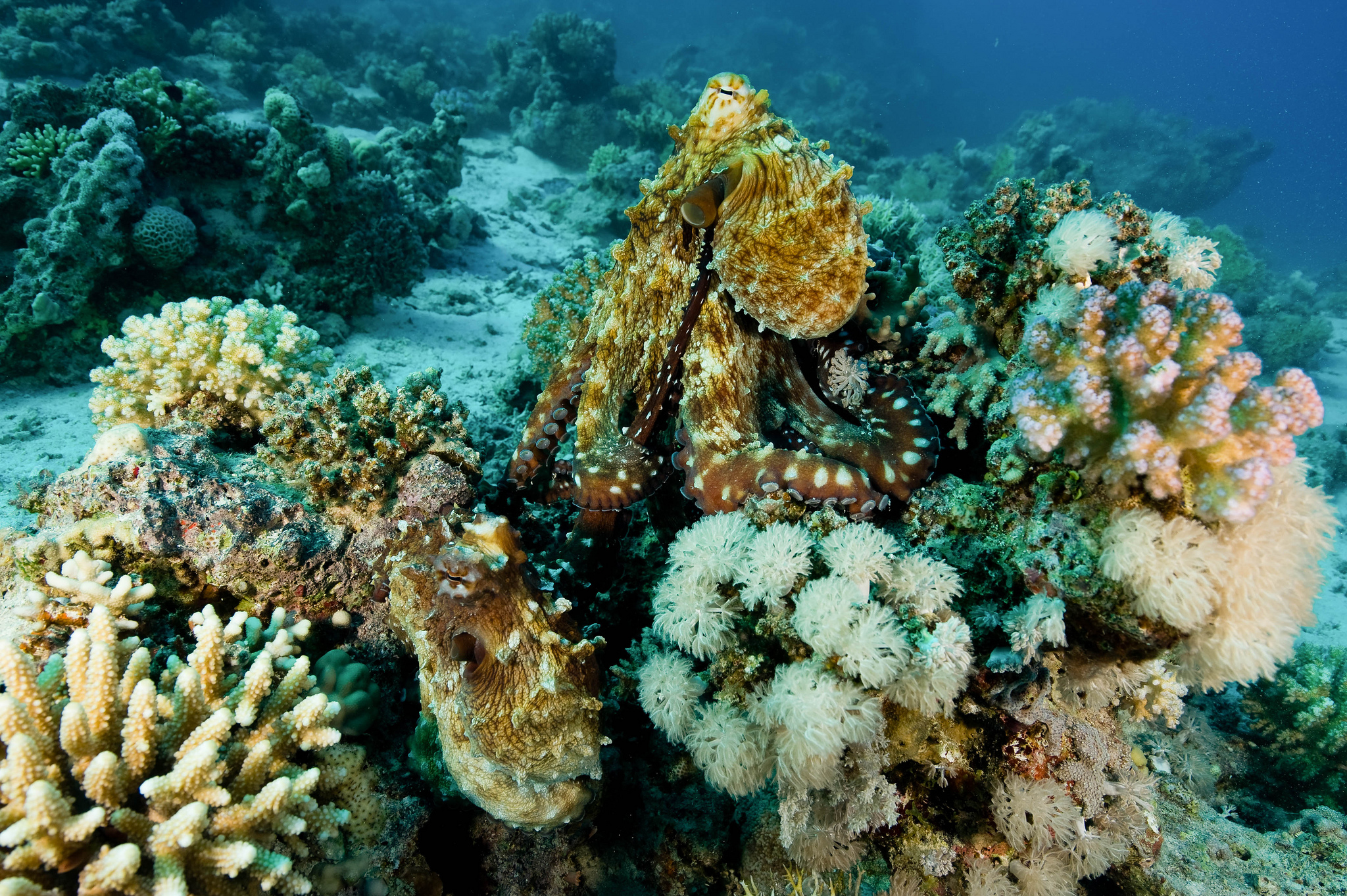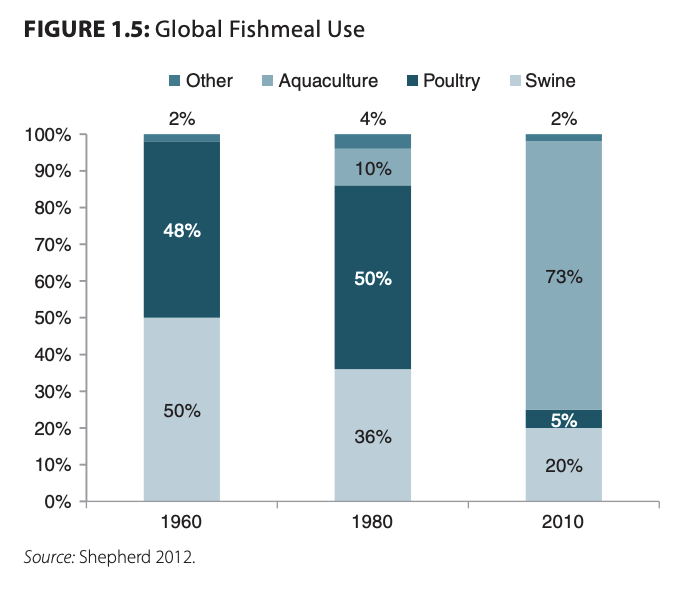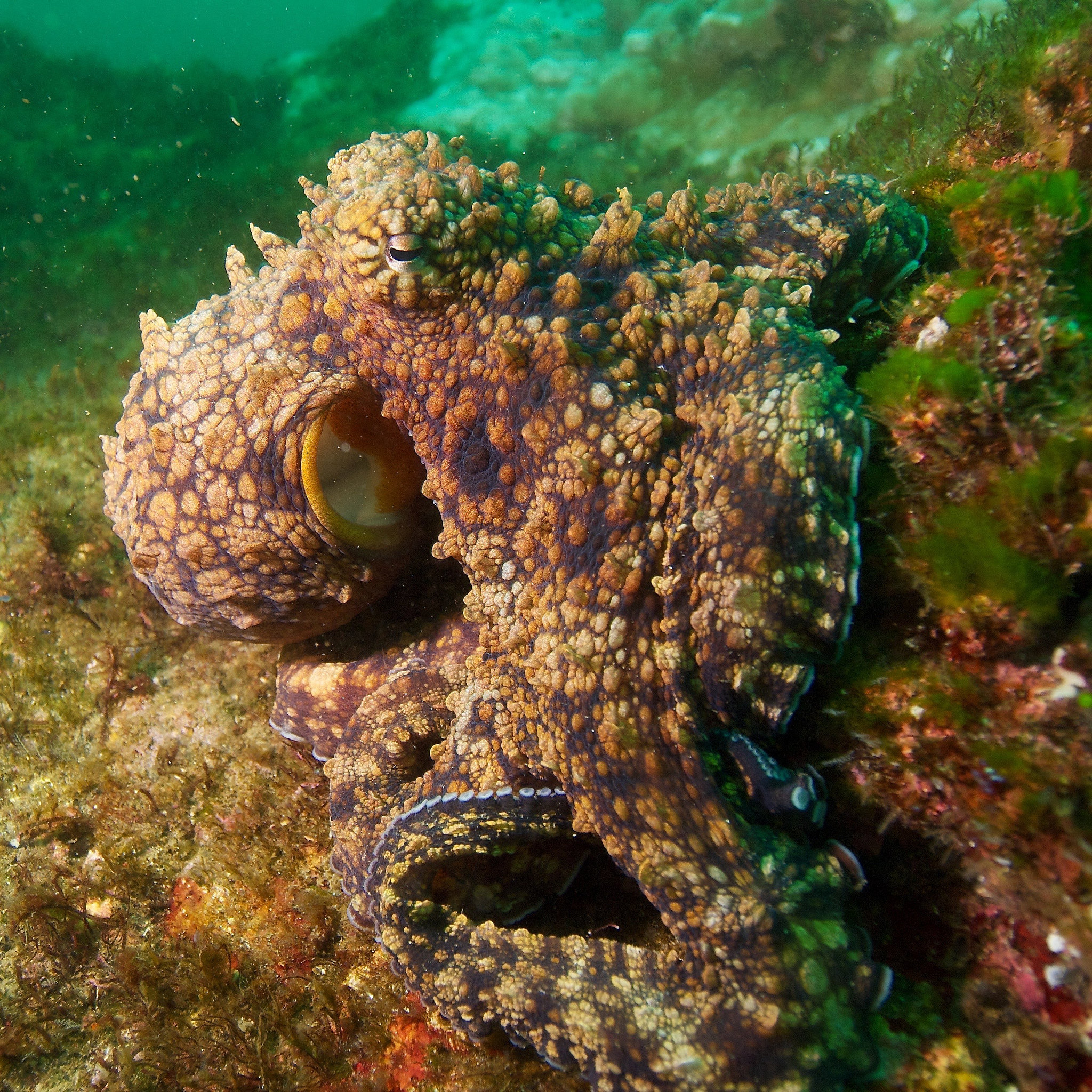
http://shermanslagoon.com/comics/september-24-2010/
The Galapagos Islands are one of the most beautiful and unique places in the world to visit. Charles Darwin created his Theory of Evolution right here from the diverse wild animals, breathtaking scenery, and rich history. Heck, prior to our research, the Galapagos Islands was at the top of our bucket list. On the surface, the waters are protected, the marine species are plentiful, and tourism is booming. So why then, was it listed as one of 2018’s top places not to go? What’s the problem?
Before we dive in…
The Galapagos Islands, an archipelago province located 1,000 km west of Ecuador, is one of the most unique places in the world.
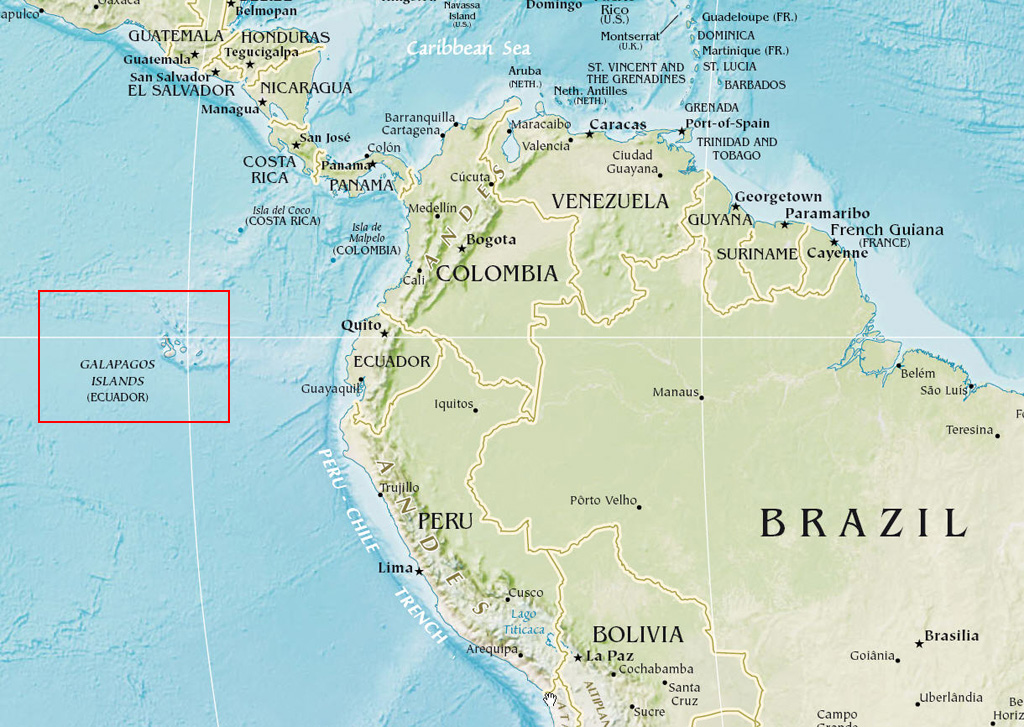
(C) Lee, Y. (Photographer). (2010, June). Galapagos_Ecuador [digital image]. Retrieved from https://flic.kr/p/8cBvNT
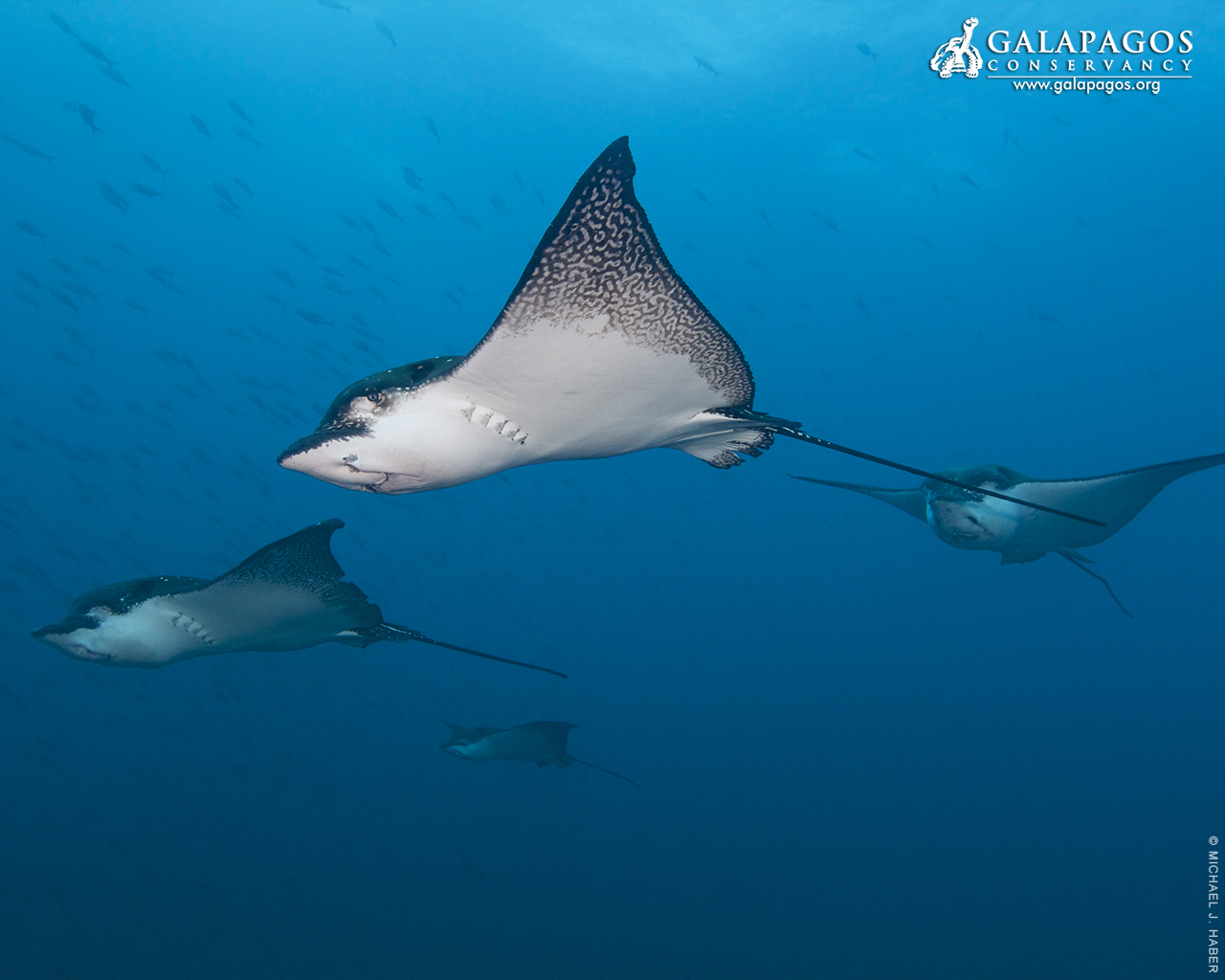
(c) Michael J. Haber
The Galapagos Marine Reserve
The Galapagos Islands and the waters surrounding it are heavily protected, with 95% of the waters designated as a “protected area”.In 1998, the Galapagos Marine Reserve (GMR) was created to protect the marine biodiversity in the Galapagos Islands. It restricted fishing only by local permanent residents and allowed a joint effort in the local management of the marine biodiversity. At 133,000 km2, the GMR is one of the largest and most biodiverse marine protected areas (MPA) in the world.
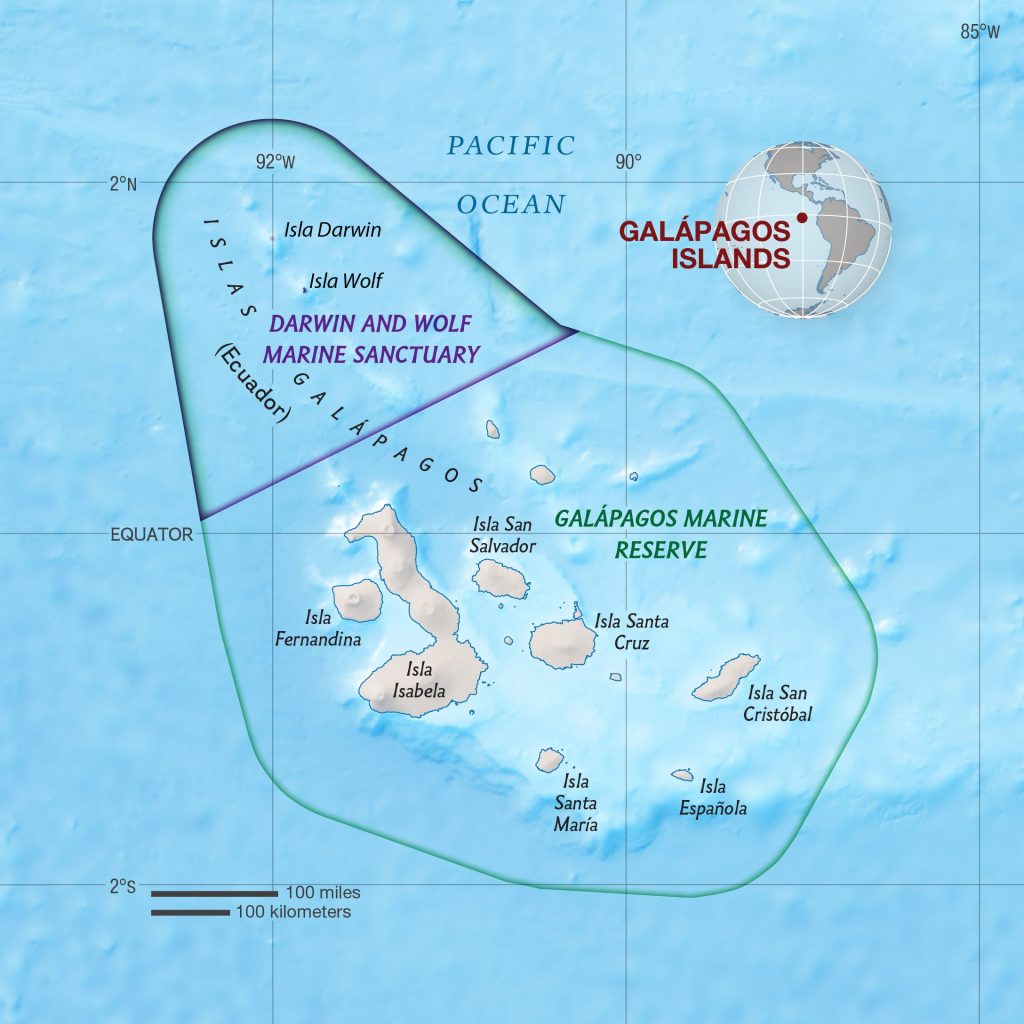
Map by National Geographic Society (c) Charles Preppernau
So how then, does the actual state of the biodiversity, environment, tourism industry, and economy square up to the opinion of tourists? How has tourism become a threat to one of the most important and biodiverse places in the world? A statement we received from the world famous Dr. Daniel Pauly accurately outlines our transition into this section regarding the reality of the GMR and how it differs from perception:
“The Galapagos advertise themselves as pristine. [One of] the major species, a grouper, is now red-listed. Major species that sustained the fisheries in the ’50s or ’60s are [no longer present]. But [the Galapagos Islands are] still declared as “pristine”. What does that even mean?” (Dr. Daniel Pauly, personal communication, 26 March 2019)
We believe that it is this very perception of the Galapagos Islands’ unique and unparalleled biodiversity on the islands and the surrounding waters that have caused the massive tourist boom over the last 30 years.
Tourism in the Galapagos
Ecuador, which is the governing state of the Galapagos Islands, was and is considered one of the poorest countries in South America. The pristine marine environment in the Galapagos Islands is a huge draw for tourists, and its international fame driving the continued growth of the tourism industry is the “socioeconomic engine” for the local economy. In 2015 alone, the Galapagos Islands hosted over 224,000 tourists. That is 12 times more than compared to 1980! Tourism now holds ⅓ of the job market and is responsible for nearly 70% of the local economy. Due to the tourism industry boom, the standard of living in the Galapagos has increased substantially, making it a desirable place for business owners, tourism operators, and tourists alike.
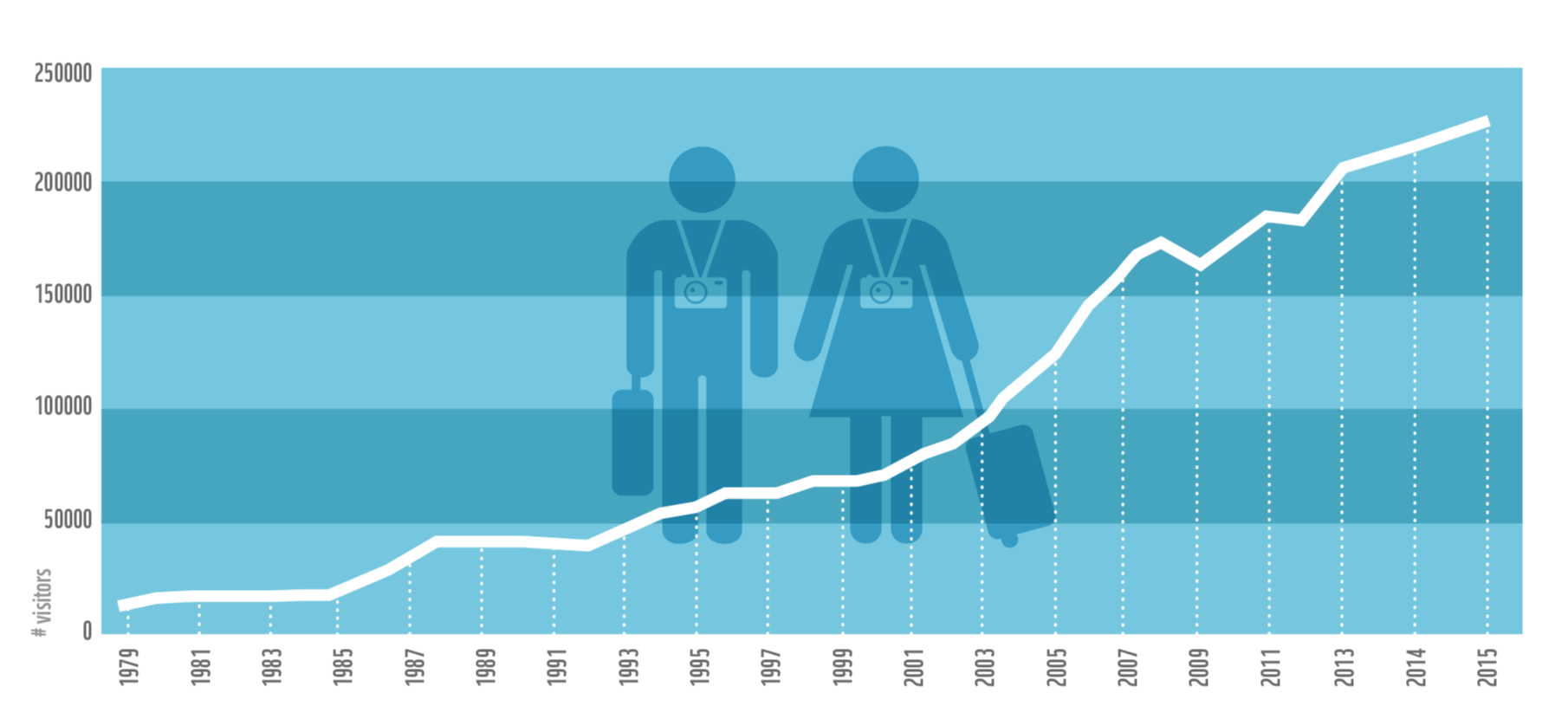
The Growth of Tourist Numbers from 1979 to 2015. Retrieved from Schep, S.W. et al. (2016)
The Impact of Tourism
With the increase in tourism and economic boom in the Galapagos Islands over the last 40 years has also caused huge need for more development and expansion. Although the tourism boom might seem like a good thing, the Galapagos economy has only received 15% of the profits that come from the industry. That’s not enough! This also means that 85% of the income, nearly US$355 million, went to overseas big companies without ever helping the locals. In Galapagos history, there has never been a good management plan for tourists, meaning there is an ever-expanding limit on how many people can visit the islands year to year. As more and more come to the islands, the infrastructure to maintain the increasing number of tourists has struggled to keep up. As time goes on, more and more studies are finding that the tourism industry in the Galapagos Islands is not sustainable to maintain the current biodiversity. This means animals in the Galapagos are hurting from the ever-growing tourists. There are habitat destruction, waste production, resource depletion, the introduction of invasive species. As tourism increases, so do the threats and impact on the environment. The natural beauty of the islands that draw hundreds of thousands of tourists every year, might be lost to from the very thing that draws tourists.
What is Needed from the Government
To make sure that tourism in the Galapagos Islands does not continue to grow out of control, the government and legislative bodies need to make sure that new policies and management plans for the tourism industry are a must. The Galapagos Islands needs a concrete, structured, and long-term plan for the management of tourism set in place by the government and enforced by legislation. Having policies to restrict the number of tourists, as well as overseas big companies investing in more development, is crucial for protecting these animals and local people’s well-being of the islands in the long term.
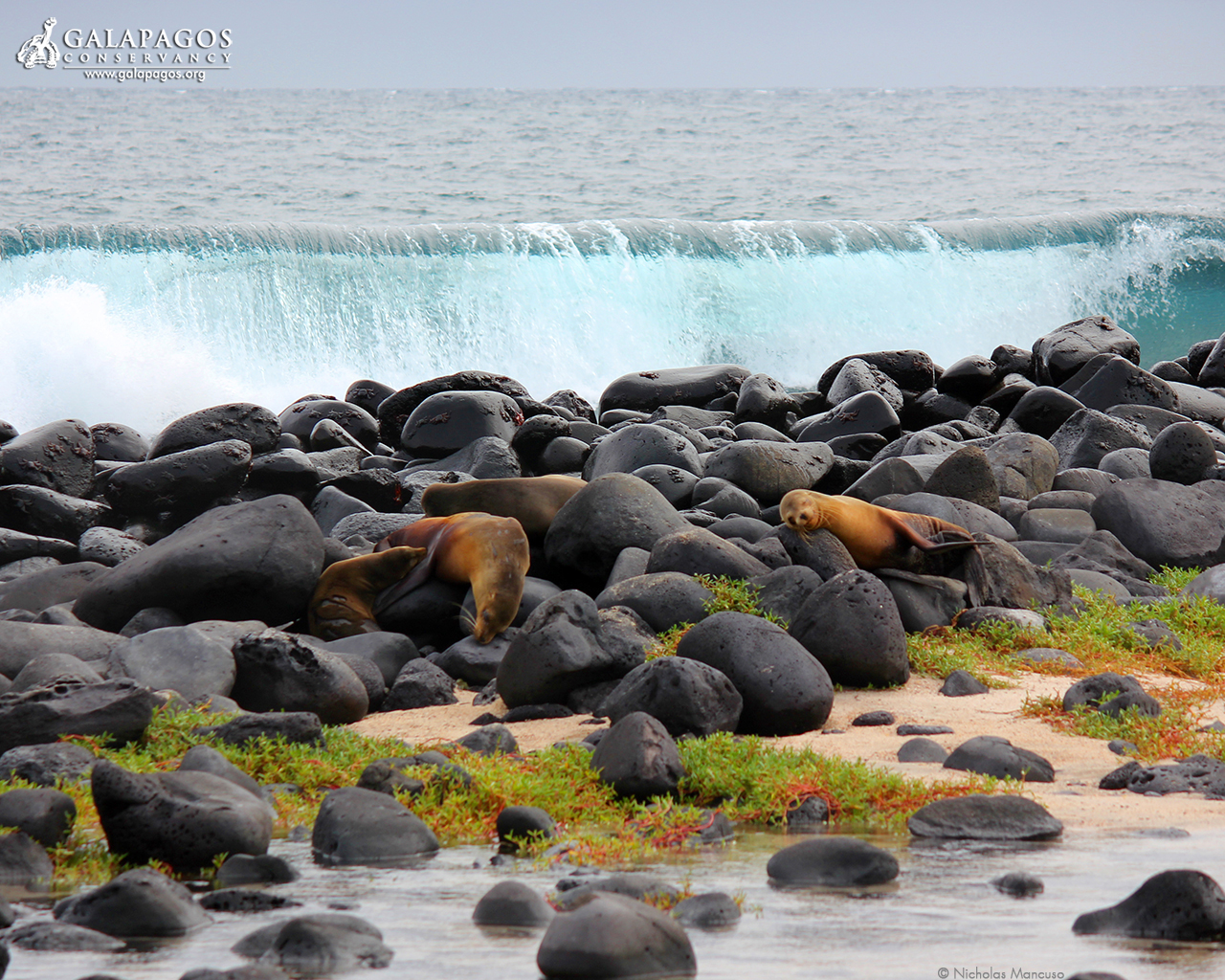
(c) Nicholas Mancuso
What You Can Do
Ask Yourself Why You’re Going
Before you plan your dream vacation to the Galapagos Islands, ask yourself why you are going. Is it to experience the beauty and nature of such a unique place? Or is it because of a travel trend that led you to want a selfie with a giant tortoise? Figure out if you’re comfortable living in local places that may not be as comfortable as your bed at home, or eating food you’ve never tried before. Taking a minute to find out whether or not the Galapagos Islands is a place you must visit is the first step in knowing whether or not you should go.
Educate Yourself
If you’ve decided that the Galapagos Islands is a place you need to go, make sure to do your research before you do. Learning about the history of the Galapagos and its fragile ecosystem is a great place to start. Information about how to make your trip as sustainable and environmentally friendly as possible is available to you, and making sure that you follow it as closely as possible will make your trip as eco-friendly as possible.
Stay Locally, Live Locally
When choosing your accommodation, try to look for local business owners and on-land accommodation rather than big chain hotels and cruise ship options. Not only are cruise ships horrible for the environment, but they also take away from the local economy and residents of the Galapagos Islands. Luckily, the Ecuadorian government put restrictions on the sizes of cruise vessels, ensuring that the smaller the boat, the better. Choosing local tourism operators and guides will make sure that your money to go back to the local economy rather than overseas major companies. The more choices you can make to eat locally, stay locally, and act locally, the better.
Minimize Your Footprint
Most importantly, be extra careful of the things you are bringing in and out of the Galapagos Islands. Following the strict rules on the things that are not allowed to enter the Galapagos is essential for avoiding the bringing invasive species to the islands, which can seriously harm the local ecosystems. Please also make sure to properly dispose of all waste and recycling and following the Galapagos Park Rules for lessening your negative impact on the islands and waters.
In recent years, the Ecuadorian government has been working hard to combat the current threats from tourism industrialization per the UNESCO recommendations. With your informed practices when visiting the Galapagos, the islands will remain the biodiversity hotspot and produce more headlines like these – Galapagos giant tortoises make a comeback, thanks to innovative conservation strategies.
By Jasmine Keller and Nick Hsieh
